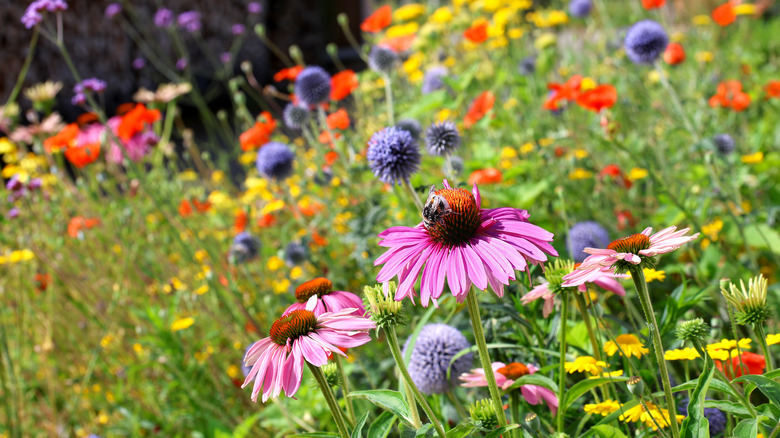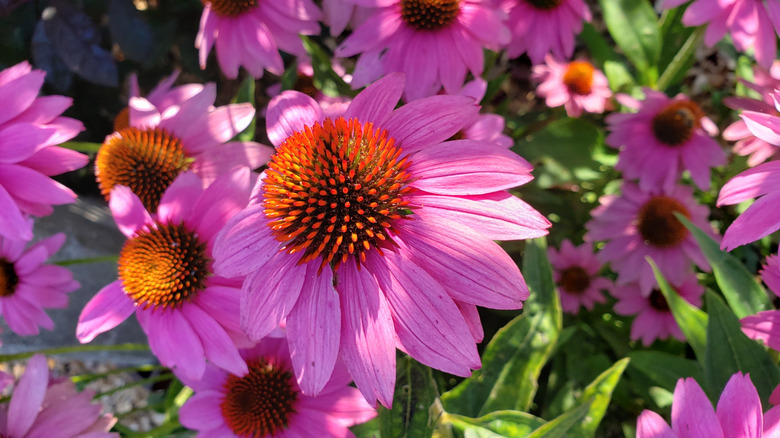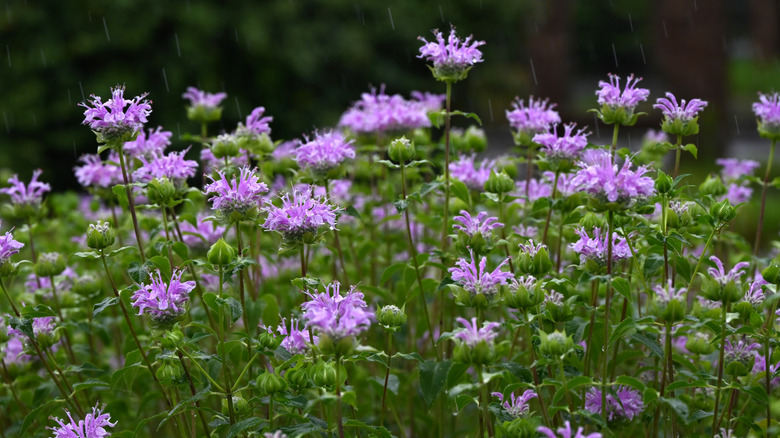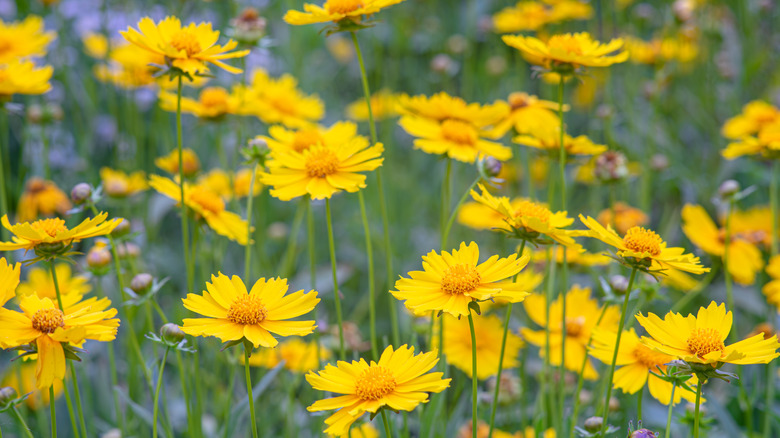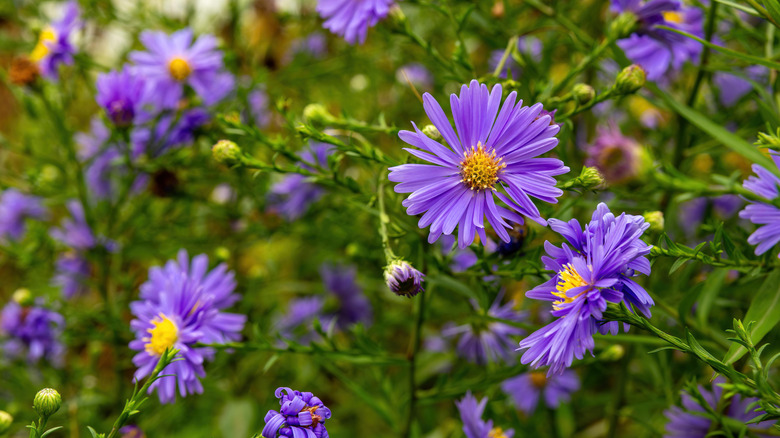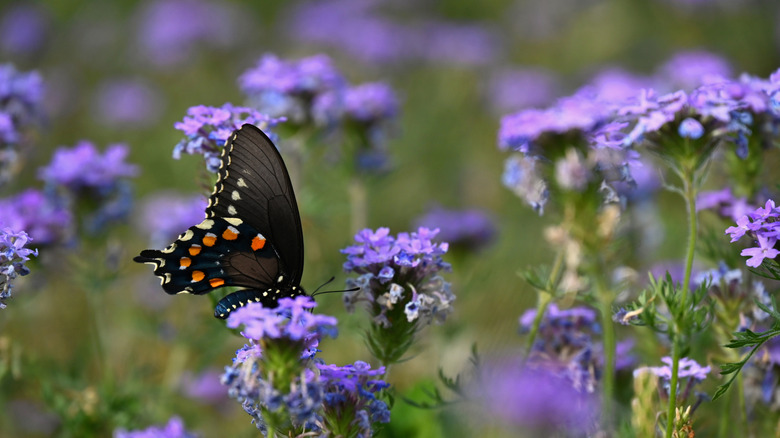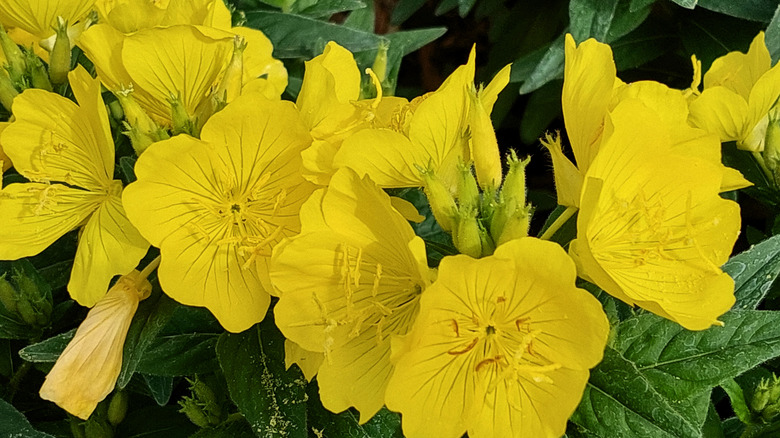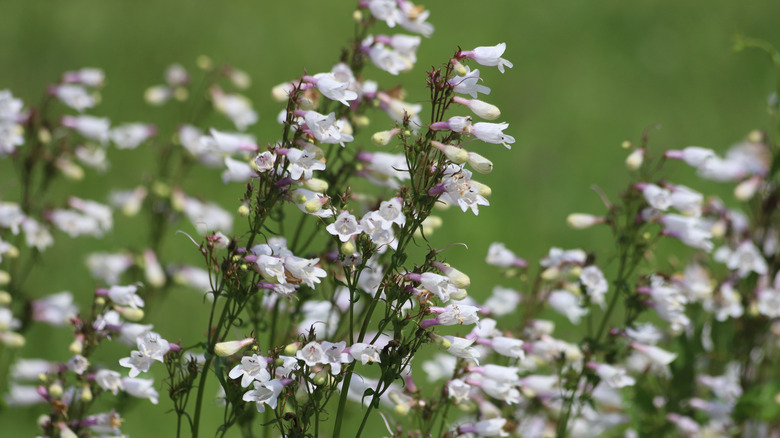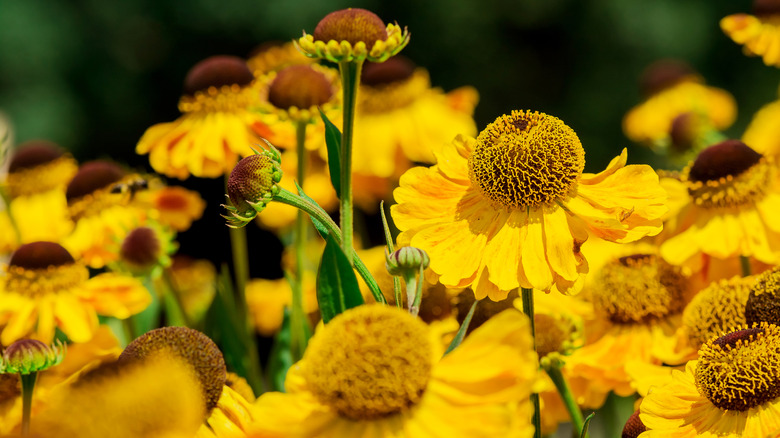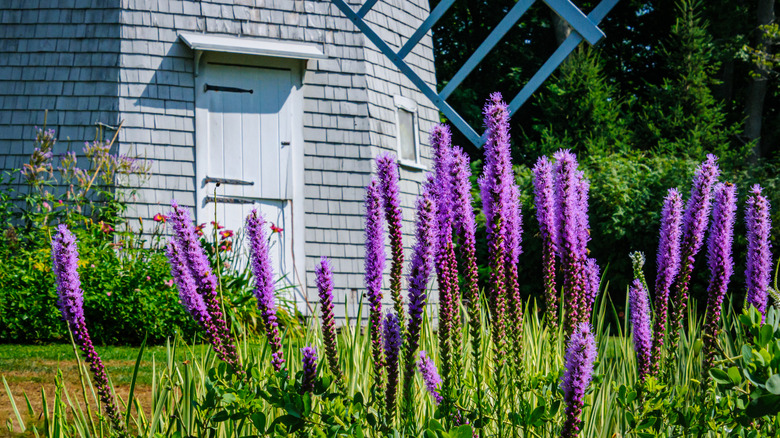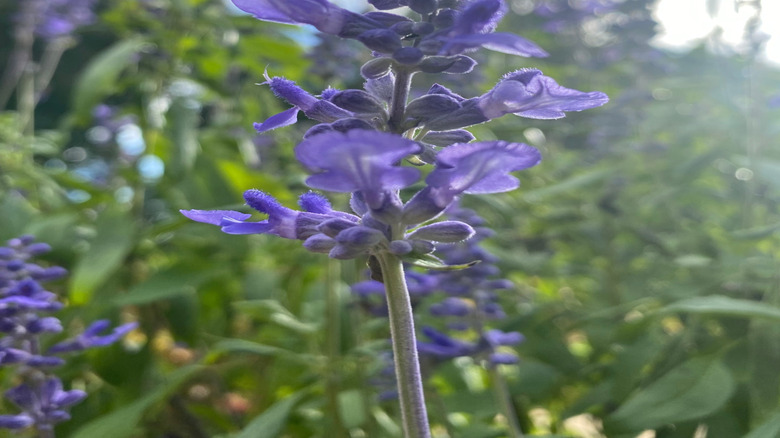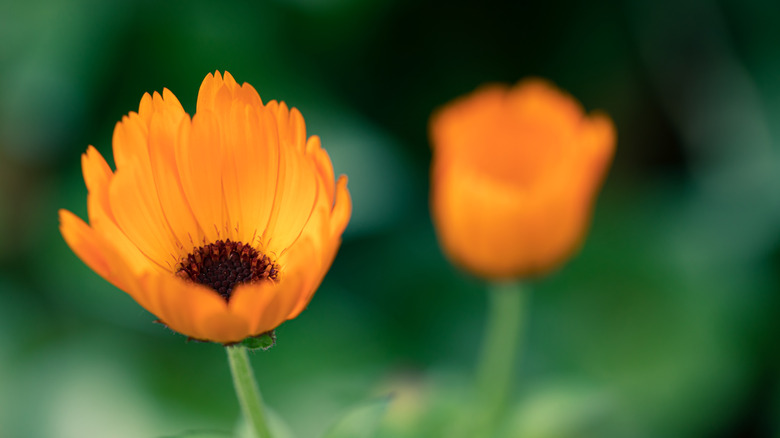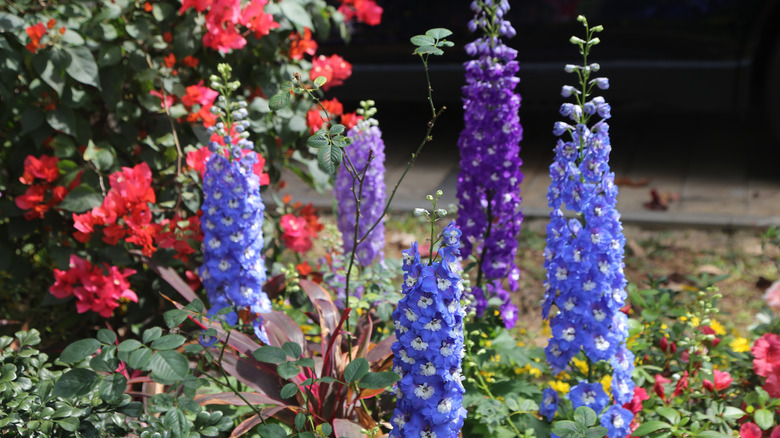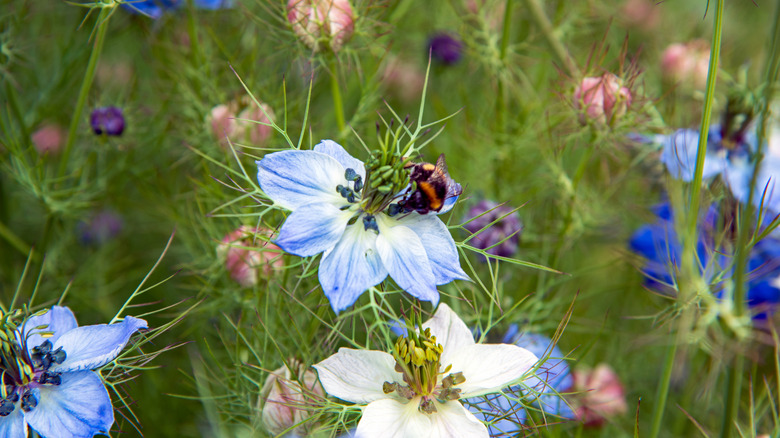15 Self-Seeding Flowers To Plant For Continuous Color In Your Garden Year After Year
When it comes to low-maintenance, self-seeding flowers that will keep your garden full of color all season and for years to come, many of your best choices will be native wildflowers. These plants have evolved to survive in local climates and propagate themselves by dispersing their seeds to the wind. Plant a few of these and you will soon have borders filled with beautiful plants. From California poppies (Eschscholzia californica) to New England asters (Symphyotrichum novae-angliae), there are options from coast to coast.
But you can also look beyond U.S. natives for something more unique. Love-in-a-mist (Nigella damascena) is a fast-growing flower that you will want to plant for spring color, and it is tougher than it looks. No matter what height or color flowers you may be looking for, there are plenty of self-seeding options to fill any gaps in your garden. And if you let them go to seed, your garden will be overflowing with free flowers for years, if not decades.
California poppies
Native wildflowers are almost always a good bet if you want to fill your garden with plants that will happily self-seed. That includes poppies, which come in many varieties, but the California poppy (Escholzia californica) in particular is a colorful addition to any garden. Native to the Pacific coast, it's typically grown as an annual that reseeds itself in areas with cold winters. When it blooms will also depend on your climate. It grows in Zones 6 through 10, but hot summers mean poppies will bloom in spring, while cooler areas will see blooms all summer long.
Purple coneflower
Continuing with the native wildflower theme, purple coneflower (Echinacea purpurea) is another great option to fill your garden with color. Native to eastern North America, these plants grow in USDA Zones 3 through 8. These perennials will come back year after year, and naturalize in the landscape due to their self-seeding behavior. They bloom June through August, bringing plenty of color to the garden throughout the summer. Coneflowers make lovely cut flowers, just be sure to leave some late-season flowers so they can spread their seeds.
Wild bergamot
Not to be confused with bee balm (Monarda didyma), wild bergamot (Monarda fistulosa) is another North American native plant that will bring blooms and more to your garden. Tolerant of drought and poor soils, it will readily self-seed in the garden. This plant grows in USDA Zones 3 through 9 and blooms from July until September, giving you lots of reward for very little work. It's also a favorite of hummingbirds and butterflies, making it a great option if you want to learn how to start a pollinator garden.
Coreopsis
If you're looking for blooms earlier in the season, coreopsis (Coreopsis lanceolata) will bring bright yellow blooms beginning in May. Another native plant that easily naturalizes in Zones 4 through 9, you'll get flowers until July, and it will thrive in poor, dry soils. This cheery, long-blooming flower will also bring more birds to your yard, and ask very little in return. Every few years you may need to divide clumps of coreopsis, and deadheading will help promote more blooms. Just remember to leave enough flowers for it to spread its seed.
New England aster
If you're looking for a late-summer bloomer to bring color to your yard into the fall, New England aster (Symphyotrichum novae-angliae) will get the job done. As natives to eastern North America, they naturalize easily in Zones 4 through 8, but prefer moist, rich soil. This makes them good choices for rain gardens. What is a rain garden? They are depressions, planted strategically to help clean and capture rainwater and reduce run-off. But if you have a regular moist area in the garden, New England aster can be a good choice to take up that tricky space.
Prairie verbena
If you're a fan of verbenas, you will be happy to know that there is a native variety that will spread throughout your garden via self-seeding. Prairie verbena (Glandularia bipinnatifida) will form low mats of flowers that bloom in spring through the fall. Hardy in Zones 5 through 8, they don't need much water and are not particularly picky about soil as long as it drains well. Use it as a ground cover that will reseed itself, filling in gaps and covering the soil in your garden.
Evening primrose
We've given you plenty of options for color during the day, but evening primrose's (Oenothera biennis) blooms open at night in June through September. Native to eastern North America, it grows in Zones 4 through 9, but this plant is a biennial. That means it completes its lifecycle in two years, but like many other biennials, it readily reseeds itself. It has an easier time establishing itself in recently disturbed soil, so give the soil around your primrose a scuff toward the end of the season.
Beardtongue
For spring blooms from April through June, look to beardtongue (Penstemon digitalis). Native to the eastern and southeastern United States and happy in Zones 3 through 8, beardtongue brings delicate, tubular flowers to the garden. This flower will quickly naturalize and is even described as aggressive at times. Its only real weakness is potential root rot in poorly drained soils. There are hundreds of types of penstemon, and there is almost certainly one that is native and well-suited to your area, so don't be afraid to do a bit of research to find the perfect pick for your climate.
Sneezeweed
Don't let the name fool you; sneezeweed (Helenium autumnale) won't inflame your allergies, but it will attract butterflies to the garden. This native is hardy in USDA Zones 3 through 8 and can grow up to 5 feet tall. It comes in a variety of options, so find the species suited to your conditions. Blooming in August through October, they will bring a burst of color to the fall garden for years to come. Cut it back in June to keep it from getting too tall or out of control, but still give it time to recover before blooming.
Blazing star
If you have a pollinator garden, you probably already have blazing star (Liatris spicata). Another native of the eastern U.S., it thrives in Zones 3 to 8 and blooms in feathery plumes in July and August. While this one will self-seed, it's slower to establish than some of the other options on this list. That could be a good thing, however, if you're looking for something less aggressive than some of the other self-seeding options out there. Learn more about the varieties of blazing star that hummingbirds will love.
Blue sage
If you've already decided to plant some of the options on this list because they thrive in poor soil and are drought-tolerant, then you will also want to put blue sage (Salvia azurea) on your list. Another native, it is hardy in USDA Zones 5 to 9, and is known to repeat bloom. It's often recommended to cut blue sage back after it flowers, but if you want it to self-seed you will need to leave some stems at the end of the season. This salvia is less common in gardens, but can thrive in wild areas.
Calendula
Grown as an annual in Zones 2 through 11, calendula's (Calendula officinalis) origins are officially unknown. Sometimes called pot marigold, it comes in a range of colors from yellow to orange, blooming at different times depending on your climate. Cooler climates can expect summer-long blooms, while hotter climates can expect bloom to be over by the time summer comes around. Use calendula to fill in gaps in the garden and attract pollinators. They also happen to be edible, so you can feel free to experiment with them in other ways as well.
Larkspur
The delicate flowers of larkspur (Delphinium elatum) have been a common sight in cottage gardens seemingly forever. Native to Europe and Asia, these plants produce tall spikes of flowers and are hardy in USDA Zones 3 through 7, but they don't thrive in humid summers like those who live in Zone 7 might experience. A favorite of butterflies and hummingbirds, the cultivars come in many colors but typically need more care than the natives on this list. From staking to careful watering at the root, you will need to give these plants a bit more TLC.
Love-in-a-mist
Is there a plant with a prettier name than love-in-a-mist (Nigella damascena)? We don't think so, and it's got a bloom that's just as gorgeous. Native to southern Europe and northern Africa, these plants are grown as cool-weather annuals in Zones 2 through 11. Their spidery foliage and delicate flowers are a unique and interesting addition to any garden. Cultivars come in a variety of colors and self-seed freely in the garden thanks to the seedpods that are almost as interesting as the flowers. Deadheading these flowers will extend the bloom period, and they also make great cut flowers.
Spider flower
If you like the wispy foliage of love-in-mist, you may also like spider flowers (Cleome). They come in a wide variety of color, heights, and even annual, perennial, or shrub forms. Only winter hardy in Zones 9 through 11, spider flowers have long-lasting blooms and thin stamens that protrude from the stems. When they find a site they like, they self-seed liberally, and we can attest that they can take hold and thrive in even the smallest cracks. Bees, birds, and other pollinators will make regular stops at your spider flowers.
